Virtual reality in healthcare is revolutionizing how medical professionals train, patients understand their care, and treatments are delivered. From providing immersive training environments to reducing patient anxiety and enhancing pain management, VR is creating tangible improvements in healthcare outcomes. This article explores the various ways virtual reality is being utilized to advance medical training, patient education, and therapeutic interventions.
– Virtual reality (VR) is revolutionizing medical training by providing immersive, risk-free simulations that enhance learning and improve surgical skills among healthcare professionals.
– VR is improving patient education and engagement, particularly by reducing preoperative anxiety and enhancing understanding of chronic disease management through interactive visualizations.
– The future of VR in healthcare looks promising, with ongoing research expected to address integration challenges, establish clinical efficacy through trials, and explore ethical concerns surrounding its use.
Immersive Medical Training
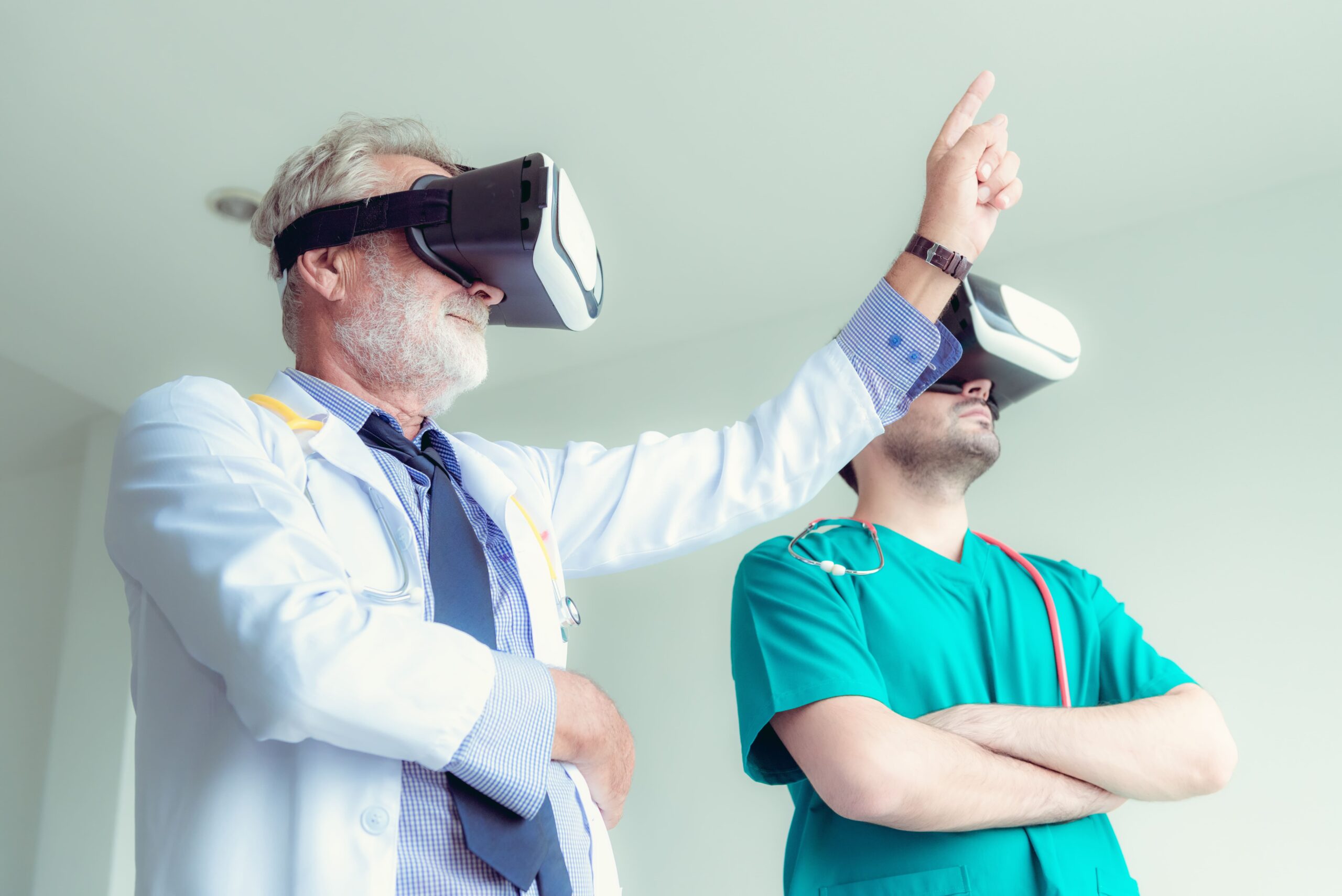 The integration of virtual reality (VR) in medical training is transforming the way healthcare professionals learn and practice their skills. VR technology offers medical students and professionals realistic simulations in highly immersive and interactive environments, boosting their understanding and confidence. From practicing complex surgical procedures to learning human anatomy in three dimensions, VR is offering a revolutionary learning experience that traditional methods simply cannot match.
The integration of virtual reality (VR) in medical training is transforming the way healthcare professionals learn and practice their skills. VR technology offers medical students and professionals realistic simulations in highly immersive and interactive environments, boosting their understanding and confidence. From practicing complex surgical procedures to learning human anatomy in three dimensions, VR is offering a revolutionary learning experience that traditional methods simply cannot match.
At institutions like George Washington University, VR is being used to train surgeons in neurosurgery and thoracic surgery, allowing them to explore patients virtually before performing critical procedures. This not only increases operator confidence but also improves clinical performance. The vr use in training is proving to be a valuable asset.
Similarly, VR tools for training orthopedic surgery residents are providing invaluable practice opportunities, saving time and resources while enhancing surgical skills. The use of VR in medical education is not just about learning; it’s about creating a highly immersive, risk-free environment where healthcare professionals can hone their skills and improve patient outcomes.
Surgical Procedures
Virtual reality (VR) provides a realistic and risk-free environment for medical students and professionals to practice surgical procedures. Platforms like PrecisionOS are being utilized to train orthopedic students, offering realistic scenarios that enhance surgical skills and confidence. VR contributes to better clinical performance among healthcare providers by creating safer learning environments.
One of the key advantages of using VR for surgical training is the ability to simulate complex procedures without the risks associated with actual surgeries. This not only reduces preoperative anxiety among patients but also allows physicians to perform surgeries with greater precision and confidence.
The use of VR in surgical training is a virtual reality game-changer, offering a highly effective alternative to traditional methods of medical training.
Anatomy Lessons
Learning human anatomy has never been more engaging and interactive, thanks to virtual reality (VR) applications. VR provides an immersive learning experience that significantly enhances education in human anatomy. Students can visualize and interact with anatomical structures in three dimensions, which deepens their understanding and retention of complex anatomical information.
For instance, Case Western University uses HoloLens to teach human anatomy, demonstrating the potential of VR in medical education. This technology allows students to explore the human body in ways that traditional textbooks and models cannot, making the learning experience more dynamic and effective.
The integration of VR in anatomy lessons is transforming medical education, providing students with a powerful tool to visualize and understand the intricate details of the human body.
Emergency Response Training
In high-pressure situations, quick decision-making can be the difference between life and death. Virtual reality (VR) is playing a crucial role in emergency response training by providing healthcare professionals with simulated scenarios that help develop critical decision-making skills. These highly immersive and interactive experiences allow trainees to practice and refine their responses to emergencies in a controlled and safe environment, preparing them for real-life situations.
Traditional training methods often lack the realism and immediacy that VR simulations can provide. VR helps healthcare professionals build the confidence and skills needed to respond effectively under pressure by replicating real-life emergency situations. This innovative approach to emergency response training is not only enhancing the competence of healthcare providers but also improving patient outcomes in critical situations.
Enhancing Patient Education
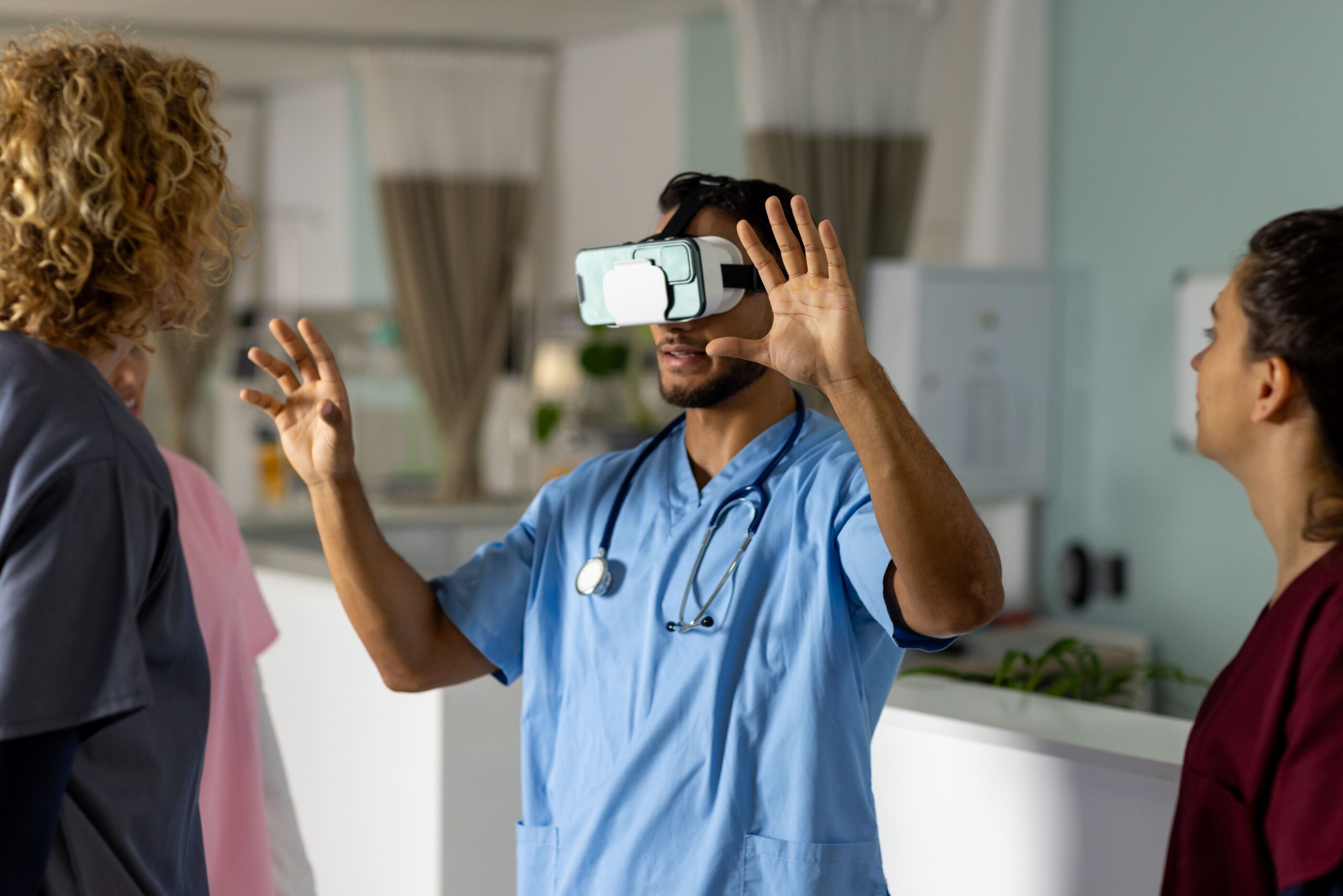 Virtual reality (VR) is revolutionizing patient education by providing immersive and interactive experiences that enhance understanding and engagement. Healthcare professionals are leveraging VR to offer patients clear visualizations of their medical conditions and treatment plans, which significantly improves patient comprehension and satisfaction. VR transforms complex medical information into easily understandable visual aids, making patient education more effective and accessible.
Virtual reality (VR) is revolutionizing patient education by providing immersive and interactive experiences that enhance understanding and engagement. Healthcare professionals are leveraging VR to offer patients clear visualizations of their medical conditions and treatment plans, which significantly improves patient comprehension and satisfaction. VR transforms complex medical information into easily understandable visual aids, making patient education more effective and accessible.
One of the key benefits of VR in patient education is its ability to reduce stress and anxiety among patients. For instance, patients can explore virtual simulations of their upcoming surgeries, which helps them visualize and understand what to expect during the procedure. This not only reduces preoperative anxiety but also enhances patient engagement and confidence in their treatment plans.
Overall, the use of VR in patient education is transforming the healthcare experience, making it more patient-centered and effective.
Preoperative Anxiety Reduction
Preoperative anxiety is a common challenge that can negatively affect patient outcomes and overall experiences. Virtual reality (VR) interventions have proven to be effective in lowering anxiety levels before surgery. By engaging with VR simulations of their surgical procedures, patients can visualize and understand what to expect, which helps reduce their anxiety and improve their overall experience.
These immersive experiences allow patients to mentally prepare for their surgeries, leading to increased confidence and satisfaction. The use of VR for preoperative anxiety reduction is a powerful tool that enhances patient engagement and improves outcomes, making it an invaluable addition to modern healthcare practices.
Chronic Disease Management
Managing chronic diseases can be challenging, but virtual reality (VR) is offering new hope for patients. VR technology helps patients visualize their chronic conditions and understand the necessary lifestyle changes needed to manage their health effectively. By providing immersive and interactive educational experiences, VR motivates patients to adhere to treatment regimens and improve their self-management skills.
Studies have shown that VR applications can lead to improved physical and psychological health outcomes for individuals with chronic illnesses. By making the management of chronic diseases more engaging and understandable, VR is helping patients take control of their health and improve their quality of life
Pediatric Patient Engagement
Engaging pediatric patients in their healthcare can be particularly challenging, but virtual reality (VR) is making it easier. VR headsets and software systems are transforming patient education by offering clear, immersive visualizations of medical conditions and treatments. This not only reduces anxiety but also enhances understanding and engagement among young patients.
Interactive VR experiences can distract pediatric patients during painful procedures, significantly reducing perceived pain and anxiety. By making the healthcare experience more engaging and less intimidating, VR is helping young patients feel more comfortable and confident in their treatment plans.
Mental Health Interventions
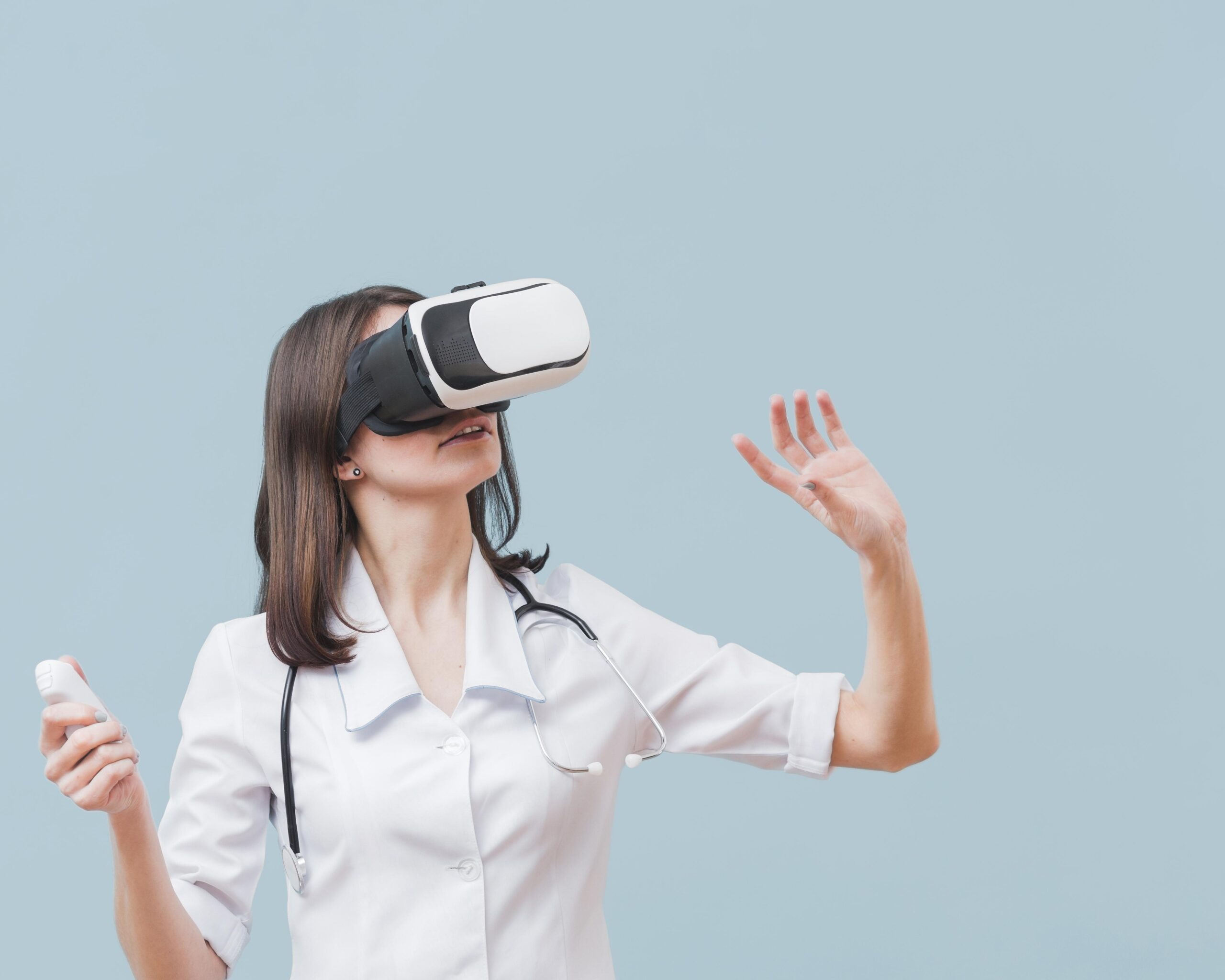 Virtual reality (VR) is emerging as a powerful tool in the field of mental health, offering innovative treatments that go beyond traditional therapies. By delivering therapy in functional virtual environments and simulating difficult scenarios, VR helps patients better understand and manage their mental health conditions. This hands-on approach enhances patient comprehension and engagement, leading to more effective treatment outcomes.
Virtual reality (VR) is emerging as a powerful tool in the field of mental health, offering innovative treatments that go beyond traditional therapies. By delivering therapy in functional virtual environments and simulating difficult scenarios, VR helps patients better understand and manage their mental health conditions. This hands-on approach enhances patient comprehension and engagement, leading to more effective treatment outcomes.
One of the key benefits of VR in mental health interventions is its ability to create highly immersive and interactive experiences tailored to individual learning needs. From exposure therapy for PTSD to treating anxiety, phobias, and depression, VR offers a versatile and effective approach to mental health care.
By providing a non-invasive and drug-free option for pain relief and mental health treatment, VR is transforming the way healthcare professionals approach medicine and mental health.
Exposure Therapy for PTSD
Exposure therapy is a therapeutic approach used for treating post-traumatic stress disorder (PTSD), allowing patients to safely confront their traumatic experiences. Virtual reality (VR) is revolutionizing this approach by creating controlled environments where patients can engage with their traumatic memories at their own pace. This immersive experience facilitates emotional processing and healing, making VR a powerful tool for PTSD treatment.
By allowing patients to confront and process their traumatic memories in a safe and controlled setting, VR helps them develop coping mechanisms and reduce the impact of their trauma on their daily lives. The use of VR for exposure therapy is an innovative and effective solution that is improving the quality of life for individuals suffering from PTSD.
Anxiety and Phobias
Virtual reality (VR) is also being used to treat anxiety and phobias by simulating anxiety-inducing situations in a controlled manner. This allows patients to gradually reduce their fears through repeated exposure. Common fear stimuli for exposure therapy in VR include:
– Animals
– Heights
– Confinement
Public speaking All of which can be adjusted to suit the patient’s needs.
By providing a safe and controlled environment for exposure therapy, VR helps patients gradually overcome their fears and improve their overall mental health. This innovative approach is transforming the treatment of anxiety and phobias, offering a highly effective alternative to traditional therapies.
Depression and Mood Disorders
Immersive virtual reality (VR) experiences have been shown to enhance mood and provide relaxation, making them a valuable complement to traditional therapies for depression and mood disorders. By providing unique therapeutic experiences, VR is transforming mental health treatments and improving patient outcomes.
The use of VR alongside traditional therapy methods can lead to more effective treatment outcomes for patients with mood disorders. This innovative approach to mental health care presents a promising avenue for improving the quality of life for individuals suffering from depression and mood disorders.
Pain Management Solutions
Virtual reality (VR) is offering new hope for patients suffering from pain, providing effective pain management solutions that go beyond traditional medication-based treatments. By creating immersive and engaging experiences, VR helps patients manage their pain levels and improve their overall quality of life. From acute pain distraction to chronic pain relief, VR is transforming pain management in healthcare.
One of the key benefits of VR in pain management is its ability to reduce pain perception significantly during painful medical procedures. Studies have shown that VR experiences can reduce pain perception by 24% or more, enhancing treatment effectiveness and patient comfort. By offering a non-invasive and drug-free option for pain relief, VR is providing a valuable alternative to traditional pain management methods.
Acute Pain Distraction
Acute pain, especially in pediatric patients, can be a daunting experience. Virtual reality (VR) offers a powerful tool to distract patients from their pain, significantly improving their hospital experience by:
– Providing engaging and interactive experiences
– Helping reduce anxiety
– Enhancing relaxation during medical procedures
– Making children feel less intimidated and more engaged
– Reducing perceived pain
– Improving overall cooperation during procedures
Interactive VR applications can transform stressful medical procedures into more manageable experiences for pediatric patients. For instance, gamified experiences explain what to expect during procedures, reducing fear and anxiety. This innovative approach to pain management and medical applications is making a significant difference in pediatric care, offering a highly effective alternative to traditional distraction methods like watching videos or playing video games.
Chronic Pain Relief
Chronic pain can severely impact a patient’s quality of life, but virtual reality (VR) is emerging as a significant tool for managing chronic pain. Studies have shown that 88% of patients reported a reduction in pain after VR sessions following cardiac surgery. By providing immersive and engaging experiences, VR helps patients manage their pain levels and improve their overall comfort and well-being.
One of the notable VR systems for chronic pain treatment is EaseVRx, which has received FDA approval. This software system offers a non-invasive and drug-free alternative to traditional pain management methods, providing patients with effective pain relief and enhancing their overall quality of life.
The use of VR in chronic pain relief is transforming pain management, offering innovative solutions that improve patient outcomes and satisfaction.
Labor Pain Management
Managing labor pain is a significant concern for expectant mothers, and virtual reality (VR) is offering a promising alternative to traditional pain relief methods. VR helps women manage severe labor pain, providing an immersive and engaging experience that distracts them from the pain. Expectant mothers using VR during labor may experience lower pain levels and reduced reliance on epidurals.
Women who use VR during labor report higher satisfaction and less pain compared to traditional methods. By offering a non-invasive and drug-free option for labor pain management, VR is transforming the childbirth experience, providing expectant mothers with a valuable tool to manage their pain effectively and improve their overall birthing experience.
Physical Therapy and Rehabilitation
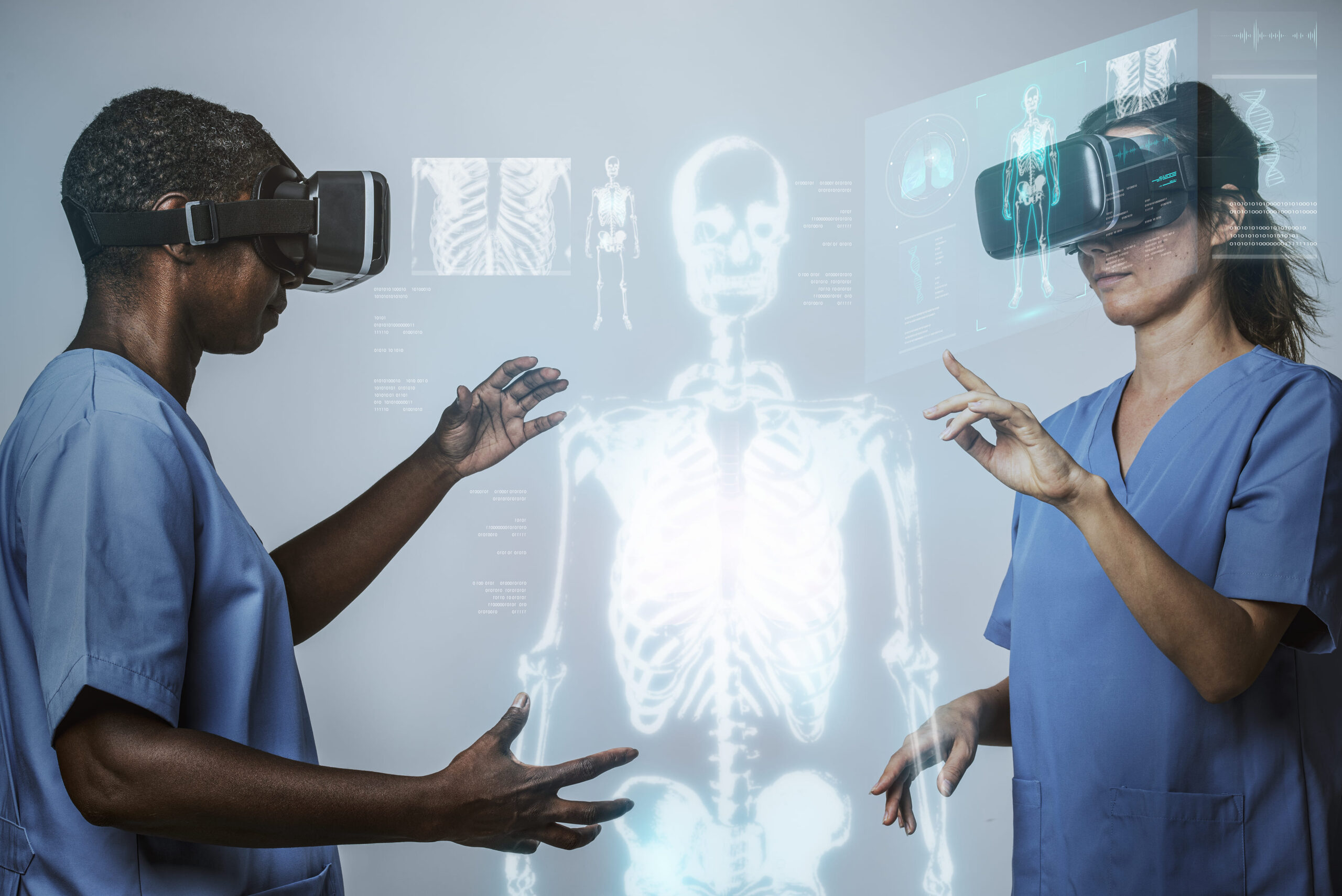 Virtual reality (VR) is playing a transformative role in physical therapy and rehabilitation, offering innovative solutions that enhance patient outcomes. By providing engaging and interactive therapeutic exercises, VR motivates patients to adhere to their treatment plans and improve their self-management skills. This not only enhances the effectiveness of rehabilitation treatments but also makes the process more enjoyable for patients.
Virtual reality (VR) is playing a transformative role in physical therapy and rehabilitation, offering innovative solutions that enhance patient outcomes. By providing engaging and interactive therapeutic exercises, VR motivates patients to adhere to their treatment plans and improve their self-management skills. This not only enhances the effectiveness of rehabilitation treatments but also makes the process more enjoyable for patients.
VR applications are particularly effective in treating complex regional pain syndrome, leading to substantial pain reduction and improved quality of life for patients. By simulating real-life scenarios, VR helps patients develop the skills they need to manage their conditions and improve their functional abilities.
The use of VR in physical therapy and rehabilitation is revolutionizing the field, offering patients a powerful tool to enhance their mobility and overall health.
Stroke Rehabilitation
Stroke rehabilitation can be a challenging and lengthy process, but virtual reality (VR) is offering new hope for patients. VR facilitates motor skill recovery by providing targeted rehabilitation exercises that are both motivating and effective. The interactive nature of VR makes rehabilitation more enjoyable, leading to improved compliance and faster recovery rates.
By simulating real-life scenarios, VR helps stroke patients engage in exercises that enhance their motor skills and overall functional abilities. This innovative approach to stroke rehabilitation is making the recovery process more engaging and effective, helping patients regain their independence and improve their quality of life.
Post-Surgical Recovery
Post-surgical recovery often requires precise motion and repetition in physical therapy sessions, and virtual reality (VR) is playing a crucial role in this process. VR enhances recovery post-surgery by offering tailored exercises that encourage patients to perform specific movements accurately. Patients using VR in post-surgical therapy often experience increased engagement and motivation, which are critical for their rehabilitation journey.
VR provides a highly immersive and interactive environment that makes physical therapy sessions more enjoyable and effective. VR intervention helps patients recover faster and more effectively by promoting precise motion and encouraging repetition, thus improving their overall rehabilitation experience.
Chronic Condition Management
Managing chronic conditions can be challenging, but virtual reality (VR) is offering new solutions that enhance patient outcomes. VR interventions in chronic condition management focus on:
– Improving patients’ mobility and functional abilities through engaging therapeutic exercises
– Helping patients develop the skills they need to manage their conditions effectively by providing personalized feedback
– Simulating real-life scenarios to support effective condition management
This innovative approach to chronic condition management is transforming the way patients engage with their treatment plans, making the process more enjoyable and effective. By enhancing mobility and functional abilities, VR is helping patients improve their quality of life and manage their chronic conditions more effectively.
Improving Empathy Among Healthcare Professionals
Empathy is a crucial aspect of effective healthcare, and virtual reality (VR) is playing a significant role in helping healthcare professionals develop this essential skill. VR allows doctors and medical students to experience the world from the patient’s perspective by simulating health conditions, thereby enhancing their understanding and empathy. This not only improves patient-provider communication but also fosters trust and compassion in healthcare settings.
VR scenarios train medical staff in effective communication techniques, improving patient satisfaction and overall healthcare outcomes. By providing immersive and interactive experiences, a vr experience helps healthcare professionals develop the empathy and communication skills needed to deliver compassionate care.
This innovative approach to training is transforming the healthcare sector through new technology, leading to better patient outcomes and satisfaction, reflecting the reality in healthcare as we treat patients.
Elderly Care Training
Caring for elderly patients requires a deep understanding of their unique challenges, and virtual reality (VR) is helping healthcare professionals develop this understanding. VR simulations allow doctors and medical students to experience the world from the perspective of elderly patients, fostering empathy and better communication skills. By simulating various disabilities, VR enhances sensitivity and understanding among healthcare professionals, leading to more compassionate care.
These simulations train medical staff in effective communication techniques, improving patient satisfaction and trust. By providing a realistic and immersive learning experience, VR is transforming elderly care training, helping healthcare professionals deliver better care to their elderly patients.
Disability Awareness
Understanding the challenges faced by patients with disabilities is crucial for providing compassionate care, and virtual reality (VR) is making this possible. VR can simulate various disabilities, allowing healthcare professionals to:
– Better understand the challenges faced by disabled patients
– Develop greater sensitivity and awareness towards the needs of disabled patients
– Provide more compassionate care practices
Experiencing simulations of disabilities encourages healthcare providers to adopt more empathetic and patient-centered approaches to care. This innovative use of VR is transforming disability awareness training, helping healthcare professionals deliver better care to their patients.
Patient Interaction Skills
Effective communication is key to successful patient interactions, and virtual reality (VR) is helping healthcare professionals enhance their communication skills. Research indicates that VR training can significantly improve the communication skills of healthcare providers, making them more effective in patient interactions. VR training scenarios provide healthcare staff with opportunities to practice communication skills in realistic patient interactions, preparing them for difficult conversations.
Training programs utilizing VR enable medical staff to practice and refine their communication skills in a controlled environment, leading to improved interactions with patients. Enhancing their ability to manage difficult conversations helps healthcare professionals improve overall patient trust and satisfaction, thus transforming the patient-provider relationship.
Future Research and Development
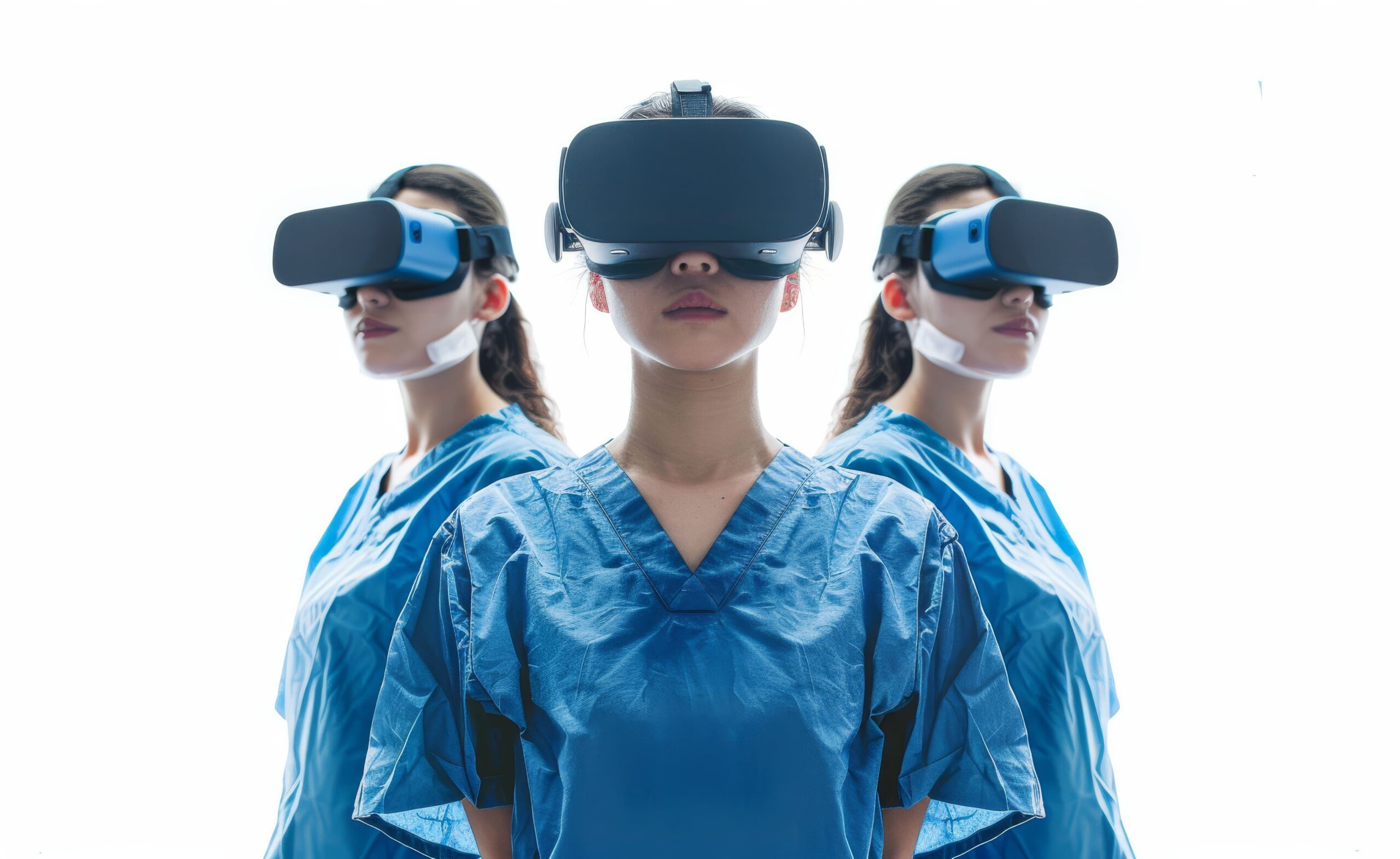 The future of virtual reality (VR) in healthcare holds immense potential, with ongoing research and development focusing on enhancing realism, interactivity, and adaptive learning systems. Companies are continuously developing VR solutions that train surgeons and improve their skills, indicating significant advancements in medical technology. By 2025, the market for healthcare-specific VR software is projected to reach $5.1 billion, highlighting its economic potential.
The future of virtual reality (VR) in healthcare holds immense potential, with ongoing research and development focusing on enhancing realism, interactivity, and adaptive learning systems. Companies are continuously developing VR solutions that train surgeons and improve their skills, indicating significant advancements in medical technology. By 2025, the market for healthcare-specific VR software is projected to reach $5.1 billion, highlighting its economic potential.
The integration of augmented reality (AR) and VR technologies shows a promising growth trend in immersive technologies learning applications in healthcare. However, challenges such as integration issues and the need for more evidence of clinical efficacy must be addressed for effective adoption to integrate vr technologies in healthcare settings.
The future of VR in healthcare is bright, with significant advancements expected in therapeutic interventions and medical training.
Clinical Trials and Efficacy Studies
To establish the long-term outcomes of VR interventions, more high-quality randomized controlled trials are necessary. Future research should focus on areas such as:
– Rehabilitation
– Pain management
– Telemedicine where VR has shown significant promise. The Technology Acceptance Model (TAM) reports a mean score of 5.19 for the likelihood of using a VR system in healthcare, indicating positive user acceptance.
Concrete user studies and iterative tests are necessary to define support for creating effective VR environments. By conducting more rigorous clinical trials and efficacy studies, researchers can gather the evidence needed to validate the effectiveness of VR applications in healthcare and ensure their successful integration into clinical practice.
Integration Challenges
Integrating virtual reality (VR) into healthcare settings presents several challenges that must be addressed for successful adoption. Healthcare professionals require straightforward VR applications to facilitate their integration into clinical settings. Current VR authoring tools primarily target experienced developers, making accessibility challenging for healthcare professionals. There is a clear need for tools that address the specific requirements of the healthcare domain for VR application creation.
Simplistic and quick standard use cases should be prioritized for VR applications to enhance usability. An intuitive learning process is critical for healthcare professionals to effectively adopt VR technologies. By addressing these integration challenges, healthcare applications can become a more accessible and valuable tool in healthcare settings.
Ethical Considerations
The use of virtual reality (VR) in healthcare raises several ethical concerns that must be addressed to ensure responsible and equitable use. Key ethical concerns include:
– The security of personal health data
– The potential for unequal access to VR-based treatments
– Issues of transparency
– Concerns about justice
– Potential manipulation
– Limited access for privileged groups
These are significant issues surrounding the use of VR in healthcare.
A principle-based approach is suggested for assessing the ethical dimensions of VR applications in healthcare. This approach focuses on:
– human values
– a preference for human interaction
– a patient-centered approach By addressing these ethical concerns, healthcare providers can ensure that VR technologies are used responsibly and equitably, enhancing patient care and
Summary
Virtual reality (VR) is revolutionizing healthcare by offering innovative solutions that enhance patient care and medical training. From immersive medical training and patient education to mental health interventions and pain management, VR is transforming the way healthcare professionals learn, practice, and treat patients. By providing highly immersive and interactive experiences, VR is making healthcare more effective, accessible, and patient-centered.
The future of VR in healthcare holds immense potential, with ongoing research and development focusing on enhancing realism, interactivity, and adaptive learning systems. However, challenges such as integration issues and ethical concerns must be addressed to ensure the responsible and equitable use of VR technologies in healthcare settings. By overcoming these challenges, VR can become a valuable tool that transforms healthcare and improves patient outcomes.
In conclusion, the transformative potential of VR in healthcare is undeniable. As technology continues to evolve, VR will play an increasingly important role in medical training, patient care, and therapeutic interventions. By embracing VR, healthcare professionals can enhance their skills, improve patient engagement, and provide more effective and compassionate care. The future of healthcare is here, and it is immersive, interactive, and powered by virtual reality.
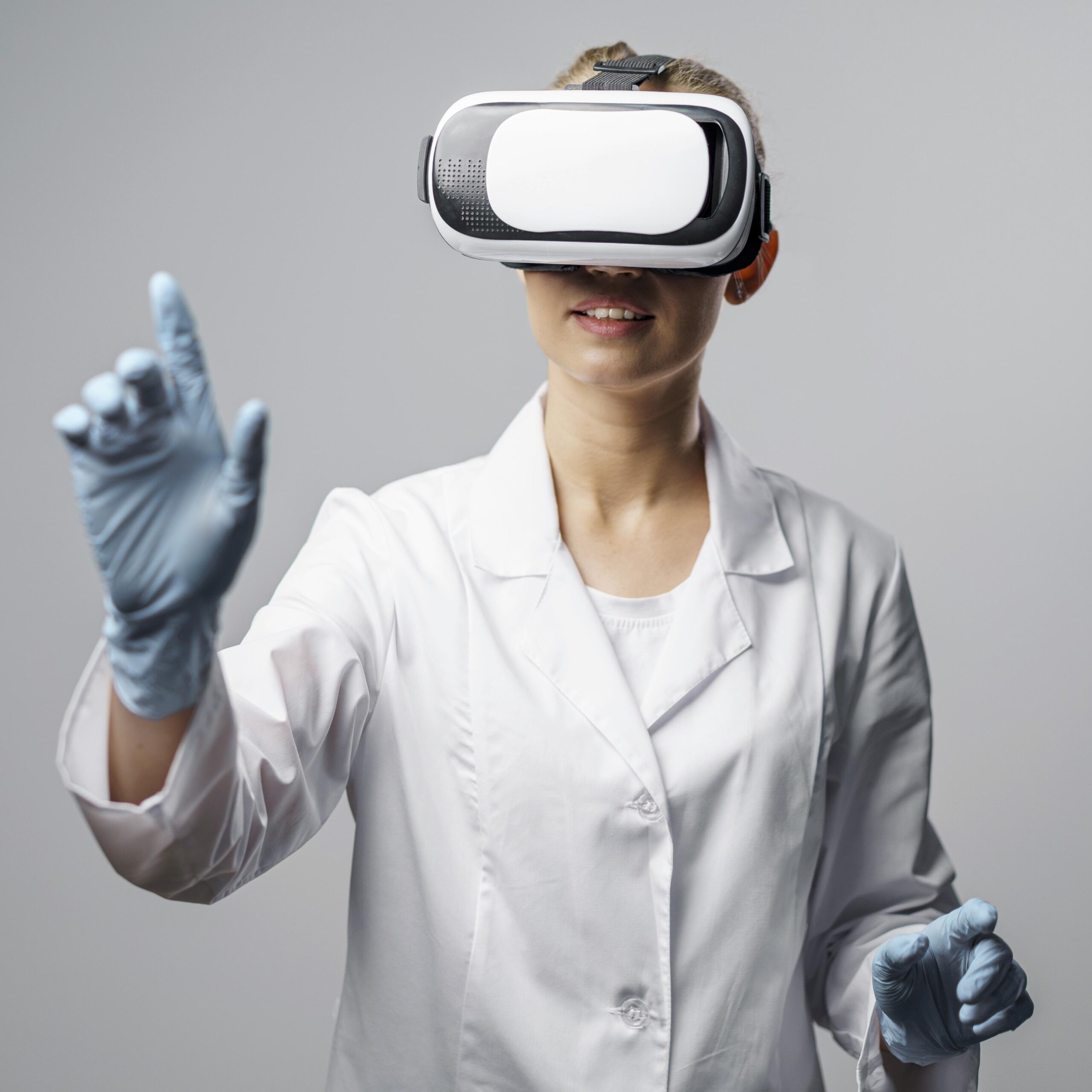
Leave a Reply